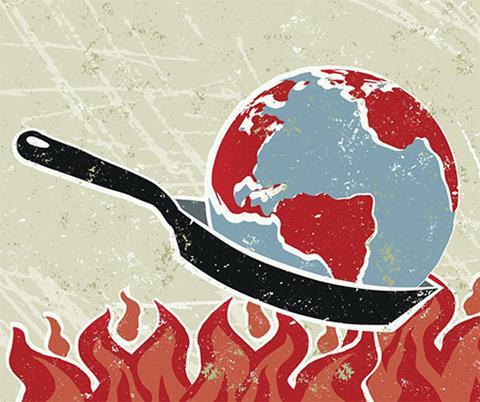New research shows the economic impacts of climate change are set to get even more severe. Risk professionals must therefore urgently target prevention and mitigation measures.
Climate change will have a larger impact on economic losses in the future, according to Swiss Re Institute.
A new analysis of 36 countries ranks the Philippines and the US as the most economically exposed countries today, where hazard intensification is likely to occur due to climate change.

The changing risk landscape
Based on findings from the Intergovernmental Panel on Climate Change (IPCC), the Swiss Re Institute has analysed where hazards are likely to intensify and overlaid it with its own estimates of economic losses resulting from the four major weather perils as of today.
This provides a view of the possible direct economic implications if weather-related natural catastrophes intensify due to climate change.
With annual economic losses of 3% of GDP as of today, the Philippines is most impacted by the four weather perils of all 36 countries, while also being exposed to high probability of hazard intensification.
The US is second-most exposed. At USD 97 billion (0.38% of GDP) as of today, it experiences the highest economic losses in absolute terms from weather events worldwide and at the same time, a medium probability that hazards will intensify.
In general, countries with sizeable insurance protection gaps and where the establishment of loss mitigation and adaptation measures lags the rate of economic growth, are most financially at risk from hazard intensification.
Fast-growing Asian economies like Thailand, China, India, and the Philippines are most vulnerable according to the report.
While flood risk is projected to intensify globally, the main driver of major weather-related economic losses in the US, as well as in east and southeast Asia, are tropical cyclones.
Today, in absolute terms, economic losses from weather events in the US are the highest in the world, mostly driven by tropical cyclones (hurricanes). Severe thunderstorms also account for a large share of the economic losses.
| Rank | Country | Annual economic loss (% of GDP) |
|---|---|---|
| 1 | Philippines | 3.00% |
| 2 | US | 0.38% |
| 3 | Thailand | 0.36% |
| 4 | Austria | 0.25% |
| 5 | China | 0.22% |
| 6 | Taiwan | 0.21% |
| 7 | India | 0.20% |
| 8 | Australia | 0.19% |
| 9 | Switzerland | 0.19% |
| 10 | Japan | 0.18% |
How to manage the threats
The first step towards cutting losses is to reduce the loss potential through adaptation measures. Examples of adaptation actions include enforcing building codes, increasing flood protection, while keeping an eye on settlement in areas prone to natural perils.
The report found that the economic dividends of adaptation steps can outweigh their costs by multiples ranging from 2:1 to 11:1. Ultimately, losses as a share of GDP of each country will depend on future adaptation, loss reduction and prevention. Insurance can compensate for residual losses.
Even so, adaptation and insurance can only go so far. Climate change mitigation (ie, reducing emissions) is fundamental to counter the overall effects of global warming. It is not just GDP at stake. As recognised by central banks, price and financial stability are threatened too, which could add to the economic cost of inaction.
Jérôme Jean Haegeli, Swiss Re’s Group chief economist, says: “Climate change is leading to more severe weather events, resulting in increasing impact on economies. Therefore, it becomes even more crucial to take adaptation measures.
“Risk reduction through adaptation fosters insurability. The insurance industry is ready to play an important role by catalysing investments in adaptation, directly as a long-term investor and indirectly through underwriting climate-supportive projects and sharing risk knowledge. The more accurately climate change risks are priced, the greater the chances that necessary investments will actually be made.”




















No comments yet